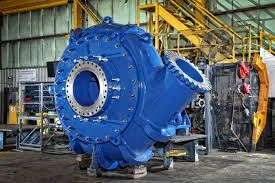English
- Afrikaans
- Albanian
- Amharic
- Arabic
- Armenian
- Azerbaijani
- Basque
- Belarusian
- Bengali
- Bosnian
- Bulgarian
- Catalan
- Cebuano
- Corsican
- Croatian
- Czech
- Danish
- Dutch
- English
- Esperanto
- Estonian
- Finnish
- French
- Frisian
- Galician
- Georgian
- German
- Greek
- Gujarati
- Haitian Creole
- hausa
- hawaiian
- Hebrew
- Hindi
- Miao
- Hungarian
- Icelandic
- igbo
- Indonesian
- irish
- Italian
- Japanese
- Javanese
- Kannada
- kazakh
- Khmer
- Rwandese
- Korean
- Kurdish
- Kyrgyz
- Lao
- Latin
- Latvian
- Lithuanian
- Luxembourgish
- Macedonian
- Malgashi
- Malay
- Malayalam
- Maltese
- Maori
- Marathi
- Mongolian
- Myanmar
- Nepali
- Norwegian
- Norwegian
- Occitan
- Pashto
- Persian
- Polish
- Portuguese
- Punjabi
- Romanian
- Russian
- Samoan
- Scottish Gaelic
- Serbian
- Sesotho
- Shona
- Sindhi
- Sinhala
- Slovak
- Slovenian
- Somali
- Spanish
- Sundanese
- Swahili
- Swedish
- Tagalog
- Tajik
- Tamil
- Tatar
- Telugu
- Thai
- Turkish
- Turkmen
- Ukrainian
- Urdu
- Uighur
- Uzbek
- Vietnamese
- Welsh
- Bantu
- Yiddish
- Yoruba
- Zulu
Telephone: +86 13120555503
Email: frank@cypump.com
Nov . 25, 2024 13:42 Back to list
Design Principles and Considerations for Efficient Slurry Pump Systems in Various Applications
Understanding Slurry Pump Design
Slurry pumps are critical components in various industries, particularly in mining, mineral processing, and wastewater management. These pumps are specifically designed to handle abrasive and viscous materials, which can include a mixture of solids and liquids—commonly referred to as slurry. The design of a slurry pump is pivotal to ensure efficient performance, durability, and reliability in demanding environments.
Key Design Features
1. Impeller Design The impeller is one of the most crucial parts of a slurry pump. A well-designed impeller can efficiently move the slurry through the pump. Common designs include open, semi-open, and closed impellers. Open impellers are often chosen for their ability to handle larger solids, while closed impellers are used for applications requiring higher efficiencies and better handling of fine particles.
2. Pump Material The materials selected for constructing a slurry pump are vital to its performance and longevity. Slurries often contain abrasive particles that can erode standard materials. As such, commonly used materials include high-chrome cast iron, rubber-lined steel, and wear-resistant alloys. The choice of material depends on the fluid’s characteristics, including pH levels, temperature, and the size and type of solids being transported.
3. Casing Design The casing of a slurry pump must provide a robust containment for the liquid and solids mixture. It usually features a volute or a wear ring that helps in controlling the flow and reducing turbulence. The design of the casing determines the hydraulic performance of the pump, making it essential to optimize for the specific slurry being transported.
4. Sealing Systems Given the abrasive nature of slurries and the corrosive environments in which these pumps often operate, effective sealing systems are critical. Various types of sealing technology are employed, including gland packing and mechanical seals. These systems prevent leakage while withstanding the operational pressures and minimizing wear.
slurry pump design

5. Orientation and Mounting Slurry pumps can be installed in different orientations—horizontal or vertical—depending on the application requirements. The mounting configuration plays a significant role in the pump's accessibility for maintenance and the overall layout of the plant. Horizontal pumps are generally easier to maintain, while vertical pumps are suitable for applications with limited space.
Performance Considerations
When designing a slurry pump, several performance metrics must be evaluated. These include the pump's flow rate, head, efficiency, and overall NPSH (Net Positive Suction Head) requirements. Analyzing these metrics helps ensure that the chosen pump will perform optimally under anticipated operating conditions.
Maintenance and Longevity
Regular maintenance is vital to extend the operational life of slurry pumps. Components such as the impeller, casing, and seals should be inspected and replaced as necessary to prevent catastrophic failures. A proactive maintenance strategy, combined with understanding the wear characteristics of the specific slurry being pumped, can dramatically enhance pump longevity and operational reliability.
Conclusion
The design of slurry pumps is a complex process that requires a deep understanding of fluid dynamics, materials science, and application-specific requirements. Whether used in mining operations to transport minerals or in wastewater treatment facilities to manage waste materials, the proper design and maintenance of slurry pumps are instrumental in ensuring operational efficiency and reliability. As technology advances, innovations in slurry pump design continue to emerge, promising even greater efficiencies and capabilities in managing challenging slurry applications.
-
Horizontal Split Case Pump with GPT-4 Turbo | High Efficiency
NewsAug.01,2025
-
ISG Series Pipeline Pump - Chi Yuan Pumps | High Efficiency, Durable Design
NewsAug.01,2025
-
Advanced Flue Gas Desulfurization Pump with GPT-4 Turbo | Durable & Efficient
NewsJul.31,2025
-
ISG Series Vertical Pipeline Pump - Chi Yuan Pumps | Advanced Hydraulic Design&Durable Construction
NewsJul.31,2025
-
ISG Series Vertical Pipeline Pump - Chi Yuan Pumps | Energy Efficient & Low Noise
NewsJul.31,2025
-
pipeline pump - Chi Yuan Pumps Co., LTD.|High Efficiency&Low Noise
NewsJul.31,2025










